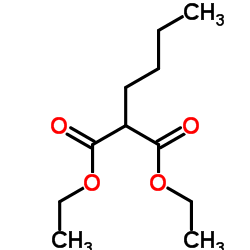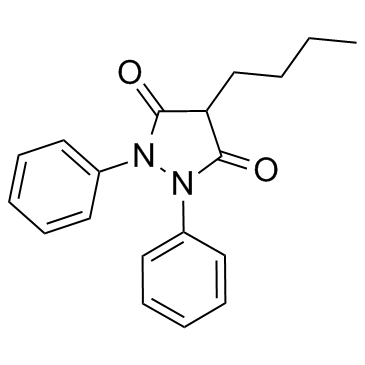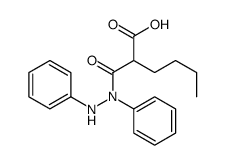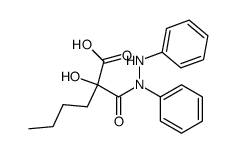129-20-4
| Name | oxyphenbutazone |
|---|---|
| Synonyms |
p-Oxyphenylbutazone
oxyphenbutazon 4-butyl-1-(4-hydroxyphenyl)-2-phenylpyrazolidine-3,5-dione 4-Butyl-1-(4-hydroxyphenyl)-2-phenyl-3,5-pyrazolidinedione G 27202 Oxazolidin ossifenbutazone EINECS 204-936-2 oxyphenylbutazone MFCD00057278 Idrobutazina Oxyphenbutazone Tanderil Oxiphenbutazone Oxi-Fenibutol Oxifenylbutazon Etrozolidina |
| Description | Oxyphenbutazone is a phenylbutazone derivative, with anti-inflammatory effect. Oxyphenbutazone is a non-selective COX inhibitor. Oxyphenbutazone selectively kills non-replicating Mycobaterium tuberculosis[1][2]. |
|---|---|
| Related Catalog | |
| Target |
COX[1] |
| In Vitro | Oxyphenbutazone enhances the anticancer efficiency of methotrexate (MTX) in Hep3B cells[1]. Oxyphenbutazone (2.5 -7.5 µM; 48 hours) co-treatment with (MTX, 0.25-1.0 µM) shows potential cytotoxicity against Hep3B cells[1]. Oxyphenbutazone exhibits reparative effects in the hepatocytes[1]. Cell Cytotoxicity Assay[1] Cell Line: Hep3B cells Concentration: 2.5 µM, 5 µM, 7.5 µM Incubation Time: 48 hours Result: Enhanced the cytotoxicity of MTX. |
| In Vivo | Oxyphenbutazone (70 mg/kg/week; p.o.; in two divided doses; for 13 weeks) exerts potential anticancer activity when co-treatment with MTX (5.0 or 2.5 mg/kg/week; i.p.)[1]. Animal Model: 5–6 weeks Wistar strain albino male rats (150–220 g)[1] Dosage: 70 mg/kg/week (co-treatment with MTX 5.0 or 2.5 mg/kg/week) Administration: Oral administration; once a week; in two divided doses; for 13 weeks Result: Exerted potential anticancer activity in rats when co-treatment with MTX. |
| References |
| Density | 1.241g/cm3 |
|---|---|
| Boiling Point | 485.6ºC at 760mmHg |
| Melting Point | 109-111°C |
| Molecular Formula | C19H20N2O3 |
| Molecular Weight | 324.37400 |
| Flash Point | 247.5ºC |
| Exact Mass | 324.14700 |
| PSA | 60.85000 |
| LogP | 3.62340 |
| Vapour Pressure | 4.7E-10mmHg at 25°C |
| Index of Refraction | 1.61 |
| Storage condition | Hygroscopic, -20°C Freezer, Under Inert Atmosphere |
CHEMICAL IDENTIFICATION
HEALTH HAZARD DATAACUTE TOXICITY DATA
MUTATION DATA
|
| Symbol |


GHS07, GHS09 |
|---|---|
| Signal Word | Warning |
| Hazard Statements | H302-H400 |
| Precautionary Statements | P273 |
| Hazard Codes | Xn,N |
| Risk Phrases | 22-50 |
| Safety Phrases | 61 |
| RIDADR | UN 3077 9 / PGIII |
| WGK Germany | 3 |
| HS Code | 2933990090 |
|
~% 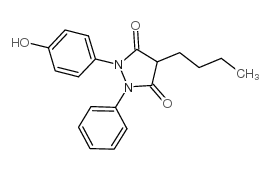
129-20-4 |
| Literature: Helvetica Chimica Acta, , vol. 40, p. 395,399 |
|
~% 
129-20-4 |
| Literature: Helvetica Chimica Acta, , vol. 40, p. 395,399 |
|
~% 
129-20-4 |
| Literature: Helvetica Chimica Acta, , vol. 40, p. 395,399 |
|
~% 
129-20-4 |
| Literature: Helvetica Chimica Acta, , vol. 40, p. 395,399 |
|
~% 
129-20-4 |
| Literature: Helvetica Chimica Acta, , vol. 40, p. 395,399 |
|
~% 
129-20-4 |
| Literature: Helvetica Chimica Acta, , vol. 40, p. 395,399 |
|
~% 
129-20-4 |
| Literature: Helvetica Chimica Acta, , vol. 40, p. 395,399 |
|
~% 
129-20-4 |
| Literature: Experientia, , vol. 15, p. 95 |
|
~% 
129-20-4
Detail
|
| Literature: Journal of Pharmaceutical Sciences, , vol. 70, # 4 p. 460 - 461 |
| Precursor 6 | |
|---|---|
| DownStream 0 | |
| HS Code | 2933990090 |
|---|---|
| Summary | 2933990090. heterocyclic compounds with nitrogen hetero-atom(s) only. VAT:17.0%. Tax rebate rate:13.0%. . MFN tariff:6.5%. General tariff:20.0% |
